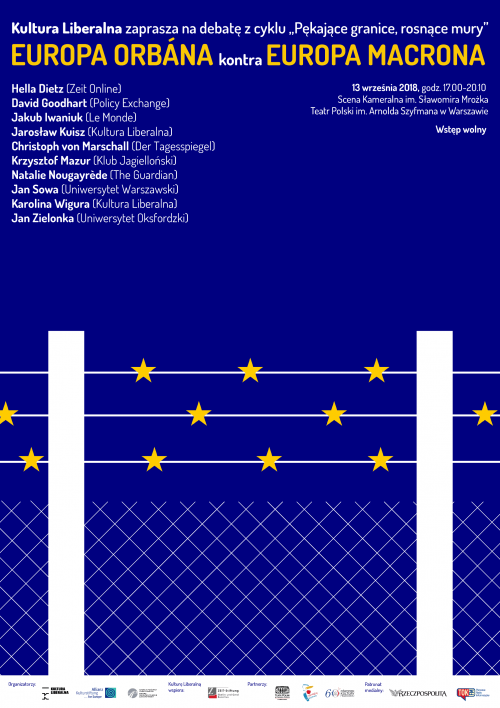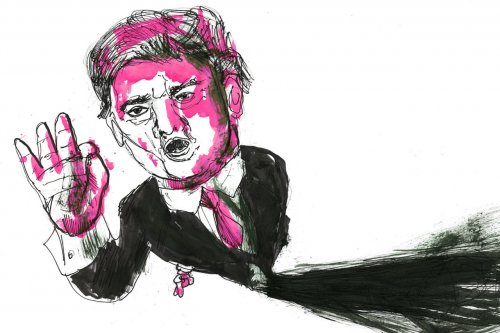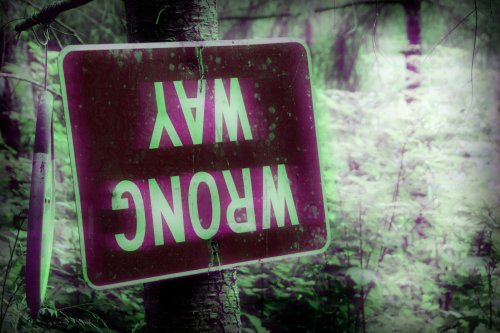Only now that it has garnered numerous reviews, positive and negative, can Ida be considered a complete work of filmic art. Along with the responses it has generated, it paints a map of flashpoints in the debate around 20th Century Jewish-Polish relations, especially during the Second World War. It also helps shed light on some of the debates raging across Poland on the subject.
Pawlikowski’s film, the story of a woman who, just before taking her religious vows, learns of her Jewish origins*, was at first showered with awards at film festivals around Poland, the Gdynia festival prize included. Soon after, in both the press and online portals, its central theme of Jewish-Polish relations became the subject of a heated debate.
Lies, beauty and politics
The first essential argument over Ida was along the lines of aesthetics and politics. On the one hand, critics such as Tadeusz Sobolewski and Krzysztof Varga thought it a tasteful and straightforward film – in the best sense of both words. They felt it was necessary to value the pretty framing, along with the beauty of the actresses on screen: alongside the young Agata Trzebuchowska, Agata Kulesza gives a fabulous performance as Wanda Gruz, the aunt of the main heroine (based, according to some, on the real-life Stalinist prosecutor Helena Wolińska-Brus). They also suggested this was not a story set back in time, but in some form of undefined present. Meanwhile, others, such as Agnieszka Graff and Helena Datner, expressed disappointment that Ida is not a “political film about history”.
Pawlikowski himself, in interviews recently published in the Polish press, suggested that Ida is meant to be a story about Jews and Poles which is so beautiful that it must be seen as an allegorical, almost moralising, elevation of the art of historical storytelling. In his own words, he wanted to make a film about a person existing in a state of such grace that it became incomprehensible to people of lesser faith than hers. Did he manage to pull this off? It is hard to say, seeing as the main character is shown in a very externalised, even behaviourist way. She says so little, online commentators suggest that she was more of a spiritual cypher than a flesh and blood heroine. Some of her actions are confusing, such as the moment when the priest offering her shelter for the night asks if she has anything in common with the Lebensteins (her family name). Ida answers with a loud: No. Is she lying then? Or is she perhaps in denial?
And if we follow the debate about the film itself, it has to be said that any discussion along purely aesthetic and political lines seems to be a form of misunderstanding, for two reasons. Firstly, it is not possible to make a film about Jewish-Polish relations which would not touch upon history and moral decisions. A film about a Jewish nun and her Stalinist prosecutor aunt naturally becomes a continuation of a discussion which has been raging for some years, and it is hard to claim that it somehow remains removed from it. In this sense, I disagree with Krzysztof Świrek, who said that if there exists some key to accessing this film, it should be an artistic, rather than a historical or morally discursive, interpretation. And yet, secondly, it is worth discussing Ida as a film about history and moral choices, and not a political or an apolitical work of art. This makes more sense than trying to widen the concept of politics to such a degree that it encapsulates everything (and therefore, perhaps, nothing at all).
The Christening of the Holocaust
The second form of dispute over Ida is the accusation that the film makes the Holocaust a Christian crime. Such a conclusion is drawn by the likes of Agnieszka Graff and Anna Zawadzka. Graff’s line of argument is the idea that the film tells more of a story about “(Catholic) faith, rather than the (Jewish) Holocaust”. The tool employed by the director to tell the story is so aesthetically refined, according to Graff, that it dissuades the viewer from thinking, creating such a seductive atmosphere even the scene where the discovery of the bodies of Ida’s family and her aunt Wanda become depoliticised. This aesthetic, instead of leading to reflections over Jewish-Polish relations, instead points to some saintly sphere. “The initial spark and the final stage of all this searching is no longer murder, nor Jewish or Polish identity, but faith, faith potent enough to absolve everyone. The film ends our discussions about history, about that which took place over half a century ago, through references to the sacred: here is a stained glass window, here a convent, here a sculpted crucifix, etc.”.
Is Graff correct? To an extent, yes – Ida does “Christianise” the Holocaust, though evidencing this can only be attempted through interpretations of the layered symbolisms within the movie. A hole in the ground, for example, symbolising Polish crimes against Jews (also seen in previous films on the subject – Birthplace by Paweł Łoziński and Aftermath by Władysław Pasikowski), takes on meaning through new life in the form of Ida, a Jewish girl who chooses Christianity, and thanks to this can be reborn out of earthly ashes, or be “resurrected”. Hence, Graff’s criticisms are not unfounded.
The question remains however, whether such criticisms mean Pawlikowski’s film is a failure. Attempts to understand the Holocaust in Christian terms, most often in crucifixion terms, have often been attempted in the past. It is hard to today imagine any sort of Christian theological approach to the Shoah without mention of the famous fragment from Elie Wiesel’s book Night, when someone refers to a boy, dying in terrible pain on a gallows, as: here is God, here he hangs. Jews find this sort of approach difficult to accept, for a number of reasons. What is more, it causes a deep sense of distaste, disgust even. “The-crucifixion-of-Christ-as-a-broad-symbol is one thing, but crucifixion-as-actual-event-of-the-murder-of-six-million-human-beings, including helpless children, their weeping mothers, and quiet ‘Muslims’, is a whole other thing” – these words, penned by Emil Fackenheim, do a good job of explaining this reaction.
Ida can be interpreted as something which goes beyond Good Friday deliberations by Christian theologians, in categories of Easter Sunday. Ida is herself a resurrection. She is both a Jew and a Pole, and her fate brings these two national histories together. Communities can be remade. There is no reason to suspect that this narrative, leaving aside its risky nature, resulted from anyone wishing to upset anyone else. Perhaps it was driven more by the desire to explain something of Jewish history, using categories of thought a Christian would find more serious, more potent. Pawlikowski, being of both Jewish and Christian origin, tries to combine things which appear impossible to bring together, in order to force viewers to attempt some form of understanding.
Have Poles had enough?
And the third line of approach, directly related to the second: does Ida, as is the opinion of certain critics, really bring to a close an important discourse on the subject of Jewish-Polish relations in the 20th century, especially from the time of World War Two? This argument arose in the Graff quote provided earlier, suggesting that faith is meant in some way to “cleanse” Jewish-Polish relations. To further quote Graff and Datner: “Pawlikowski, through his film, manages to meet a public need to bring to a close the process of resolving Polish perceptions of the Holocaust. The film fulfils this need narratively, by balancing the processes of naming and blaming, and answers it with subtle aesthetics and references to metaphysics and religion (…). A decade ago, the publication of the book Neighbours by Tomasz Gross caused a collective tremor: it was the start of a slow and hard process of reclaiming collective memory. The delighted responses to Ida suggest that Poles have had enough of this slog”.
And yet, Pawlikowski’s film does not avoid the topic of the transformation of memory, nor does it bring discussions around it to any sort of close, while the positive reception the film has received in Poland might not have anything to do with a collective need to close the topic of the Holocaust once and for all. The film is also far from a rehashing of antisemitic stereotypes, as suggested by Anna Zawdzka, stereotypes which imply that Stalinism was caused by Judeo-Commies, and that Stalinist prosecutors of innocent Poles were in fact Jews, not other Poles. Ida seems to, in fact, challenge these stereotypes. It does include, it is true, a Stalinist procurator-Jew figure. And a Judeo-Commie figure who expresses the conviction that Jews, as a social group, betrayed others, that they welcomed Communism with relish and that they were solely responsible for installing that system in post-War Poland. This sort of figure, by the way, causes much anger among many Poles. The same people who feel this anger, however, are also profoundly moved by the story of the Holocaust. They also feel shame for the post-WWII pogroms and contempt for those responsible for the persecution of Polish Jews in March 1968. And these two presentations of Jewish-Polish characters are never unified. We lack both understanding and a collective narration, one which would not be a narration of vengeance.
Pawlikowski’s tries the trick of proposing just such a narration. Actually, the director throws something else into the mix – the suffering of Poles during Stalinist times. In this way, he challenges idea of Polish victim-heroes, which allows Poles to “enjoy” talking about their own suffering, placing it at the heart of all mention of the topic. Pawlikowski tries to create a picture in which both tales of Jews and of Poles can be made to fit, leading to common understanding. This is not the perspective of forgiveness: in order for this to happen, we would really have to weigh up greater and lesser crimes, and account for who owes what and to whom. Instead, Ida suggests we should come together without attempting to measure the sums of evils and trying to build, to use Hannah Arendt’s metaphor, a bridge over the weight of history, which does not refer directly to the perpetrators and the victims, but instead focuses on future generations which gaze deep into this past.
In this way, Pawlikowski doesn’t close, but continues the discussion began by Gross. In a way, this relates to how responses to Ida have thus far avoided mention of Agnieszka Holland’s In Darkness, another film focused on the impossibility of making simple judgements about people living in dark, complex times.
Overall, does Ida manage to meet its difficult brief? Is Pawlikowski’s aim true? We cannot be certain. Jacek Wakar, writing recently for Liberal Culture, pointed out flaws with Pawlikowski’s relatively idealised film. It must be said that the director is guilty of over-simplifying numerous things. Perhaps next time he will be better served by using real biographies, instead of fictional characters created to fit both a script and a ready-made vision of reconciliation? Nor does he seem to have avoided presenting Jews and Poles as two separate groups – even though the film itself was meant to do away with this distinction – Ida herself being meant to embody a blurring already present in early post-War films about the Holocaust, such as Border road by Aleksander Ford in 1948.
And yet, for all its flaws, Ida asks questions which are worth considering.
* For all those who have not yet seen the film, it is helpful to know that the plot involves a character called Ida, a trainee nun, being sent by her mother superior to meet Ida’s only living relative – an aunt, who is also a former Stalinist-era public prosecutor. The two women then travel to visit a place where the aunt once parted from Ida’s parents, as well as her own son, in order to find out how they died and find their remains.






